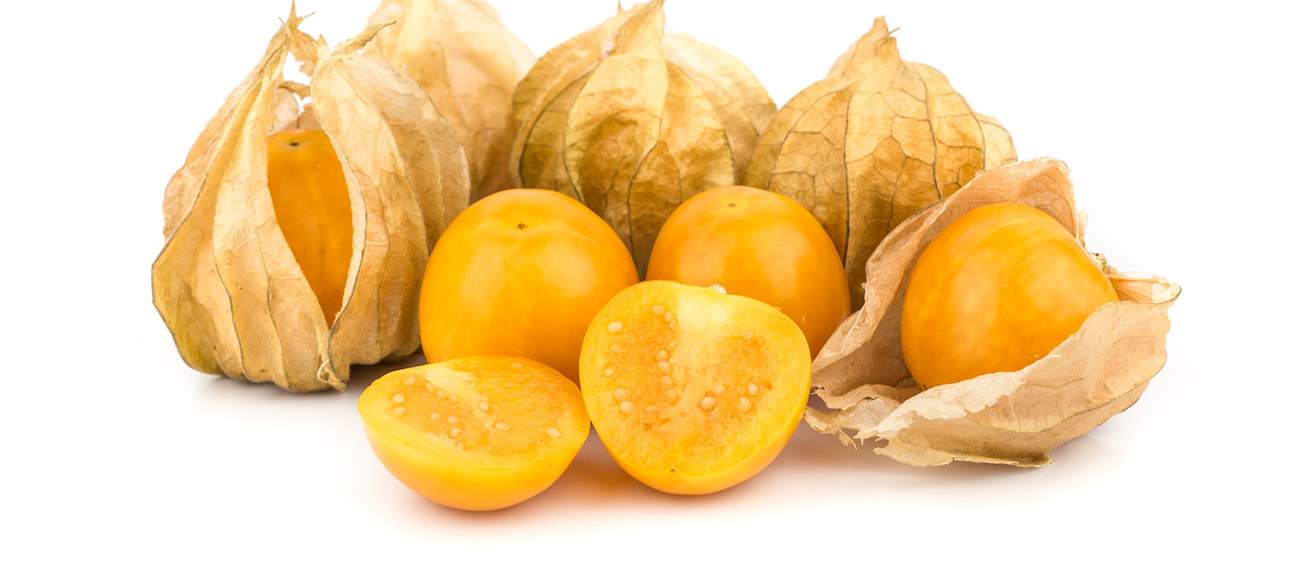Best Chilean Fruits (types and products) Types
Lúcuma is a fruit native to the Andean region of South America, most notably valleys of Peru, Chile, Bolivia and Ecuador. It is characterized by a high nutritional value, as it is full of calcium, protein, iron, zinc, and beta-carotene. Its flavor is best described as slightly sweet and similar to maple, making it an ideal ingredient for baked desserts and ice cream.
Originally, lúcuma was called gold of the Incas and was viewed as a symbol of fertility. Today, it can be found in most regional markets from January to April.
Native to South America, aguaymanto (Physalis peruviana), called topotopo in the indigenous Quechua language, is a perennial herb that produces edible, round, yellowish-orange berries which have a soft, succulent flesh characterized by a pleasant, tangy sweetness.
Mainly distributed in Peru, Chile, Ecuador, Colombia and the Argentine provinces of Salta and Jujuy, the plant is typically gathered from the wild, and it is closely related to tomatoes, eggplants, and potatoes. The indigenous populations, including the Incas, have long consumed the fruits of the aguaymanto plant.
Mountain papaya is an evergreen softwood tree that’s native to the Andes from southern Colombia to central Chile, but it’s also cultivated in subtropical and cool mountain climates of Southeast Asia and Africa. The tree produces fruits that have soft flesh with many round brown seeds.
When fully ripe, the fruits are slightly tart and acidic with an intense aroma. They’re usually enjoyed fresh or sprinkled with sugar. The fruits are also used to produce jellies and marmalades. Mountain papaya can be stewed and served as dessert, while chunks of the fruit are sometimes preserved in syrup.
Tamarillo is a small shrub or tree that’s native to the Andean regions of Colombia, Ecuador, Peru, Bolivia, and Chile. The small egg-shaped fruits are succulent and have a slightly sweet to subacid flavor of the pulp. The flavors are often described as similar to kiwi and underripe tomatoes.
Tamarillo fruits are used in numerous sweet and savory dishes, beverages, salads, dips, spreads, chutneys, pickles, jams, and sweet or savory sauces. In Ecuador, cooks make a tamarillo sauce by mixing the fruits with garlic, onions, salt, hot peppers, and spices such as coriander.
JUBAEA CHILENSIS WINE PALM IS ENDANGERED. Coquito nuts are the fruits of Jubaea chilensis wine palm, which is native to the coastal areas of Chile. Visually, the nuts look similar to tiny coconuts, while the flavor of the firm white interior is sweet and reminiscent of almonds.
The texture is crunchy, and the whole coquito can be eaten in a single bite. Locals eat them raw and cooked, and the nuts can be added to cakes, ice cream, jellies, and cookies due to their crunch texture and nutty flavors. In Chile, these nuts grow wild, but they're also available in stores and markets.
Murta con membrillo is a traditional dessert or a type of preserve that hails from southern Chile. It is made with quince and the fruit of Chilean guava (Myrtus ugni). Chilean guava is a shrub native to the area that produces small-sized red berries.
The preserve is made with guava berries and quince wedges that are placed inside jars. Each jar is then filled with sugar syrup until the fruit is entirely covered. Optionally, this preserve can include orange zest or cinnamon. Murta con membrillo is commonly prepared at home, but it is also sold at shops and street stalls.
TasteAtlas food rankings are based on the ratings of the TasteAtlas audience, with a series of mechanisms that recognize real users and that ignore bot, nationalist or local patriotic ratings, and give additional value to the ratings of users that the system recognizes as knowledgeable. TasteAtlas Rankings should not be seen as the final global conclusion about food. Their purpose is to promote excellent local foods, instill pride in traditional dishes, and arouse curiosity about dishes you haven’t tried.




